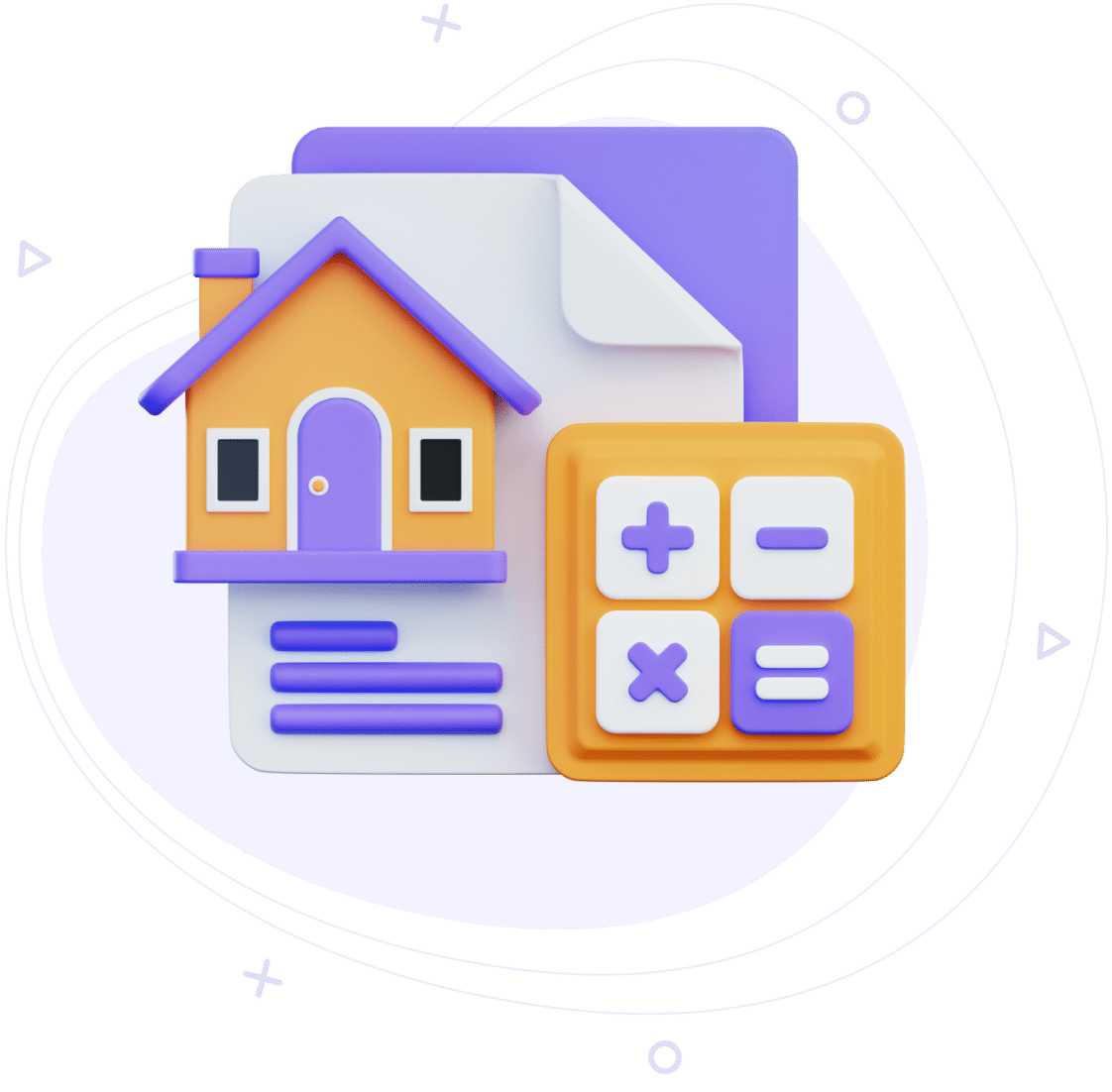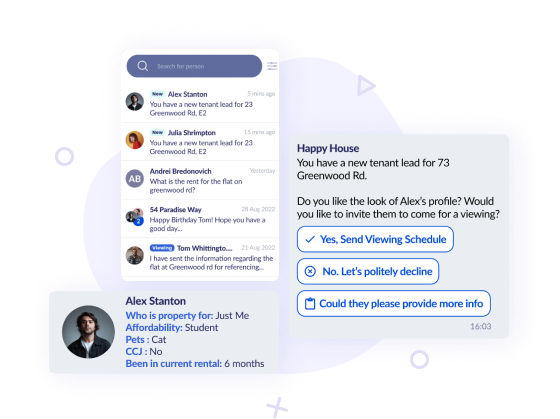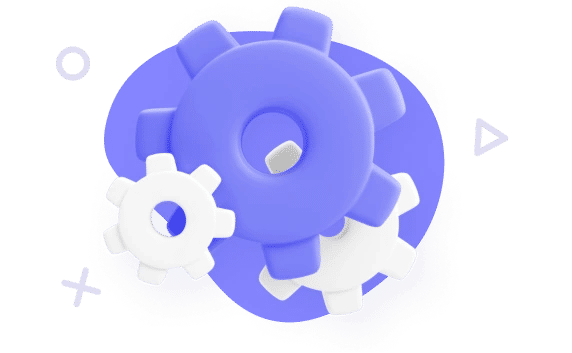-

Ivan
Software engineer
The real estate industry itself is exciting as well as working with Happy House. This project allows me to become, the very next day, a better specialist than I was the day before, take more responsibility, and operate an interesting tech stack. Sometimes, I meet technologies that are new and unfamiliar to me, and this motivates me even more. The client listens to our edits and comments, even on the design part, where we closely cooperate with the in-house team.
-

Pavlo
Project manager
It’s easy to work with Happy House, as we are on the same line as the main stakeholders’ representative. Collaborating with such an amicable and open-minded person is always a sign of successful communication during the project development process. Everything is transparent, which allows us to achieve our common goals easier. The project focused on the management of rental property and was an exciting and fresh experience for me.

Happy house: Rental Property Management App
Geniusee empowered the Happy House team with deep technical expertise to develop a rental property management app. Together, we built a system that allows users to “Find great tenants with zero risk from the comfort of your sofa.” In addition, this property management software digitizes the managing properties process, bringing online traditionally offline procedures such as tenant screening, maintenance requests, rent payments, and more.

Business context
The client reached out to us, seeking an experienced technical team to strengthen the in-house team and deliver full-scale development of the rental property management software. Our great competitive advantage was deep expertise in different frameworks, especially React and integration services. We also helped our client with SEO optimization for the property management app, which is quite unusual, as typically, this process is handled by the in-house team.
Key challenges:
- Handle payments and integrate them with the main system;
- Align the delivered results of frontend development with the main system and infrastructure;
- Integrate multiple frameworks together and ensure a smooth workflow.

Work approach
-
Kanban
The Kanban system allows us to stay focused and deliver new iterations and establishments one by one in a smooth flow. We’re not usually using any pure methodology, as it’s always better to adapt it to a particular client’s needs. In this project, we used distinctive Kanban with a huge backlog.
-
Flexible frameworks
We needed our service to respond to system actions with the smallest possible penalty in effort, time, cost, and performance. We achieved this using the most flexible frameworks and libraries. This allowed us to dynamically manage features and functionality yet keep the focus on desirable outcomes and clients’ business goals.
-
A/B testing
We always deliver products and services that will make end users fall in love with our clients. One way to achieve this is user experience research—A/B testing as a randomized experiment with two variants. We used it for different features, and the results led to final implementations and iterations.
-
Integrations and connections
Our team connected existing system parts with the functionality we tailored using routing. We also integrated multiple third-party services that extend the main system functionality. The Geniusee team created a considerable amount of handwritten modules for them to personalize accommodated components.
Process
We worked closely with the client’s in-house team. Our team rebuilt from scratch some system parts and bound them together. Some services, such as, for example, UI/UX design of rental management software, were delivered from the client’s side. Our primary focuses were frontend development and multiple system integrations aimed at smoothing digital processes (ensuring a secure workflow, allowing users to pay and collect rent, managing content, and more). We also provided backend development services and tailored the architecture and infrastructure of the system. In addition, the Geniusee team assisted in admin panel development and further improvements.

Project tech stack
The work on this project required serious improvements in system speed, stability, and scalability to assure a high level of digitally transformed cooperation between landlords and tenants. Our team also focused on consistency refinements, reduction of human-made errors, elimination of configuration drift, and modifications of security strategies. All of the above demanded a careful approach to the chosen tech stack.
Frontend:
Frontend infrastructure:
Backend infrastructure:
Infrastructure as a code:
CI/CD:

Geniusee team
We brought together experienced developers and DevOps specialists to empower Happy House's in-house team with our skills and expertise in real estate development, integrations, and architecture. This allowed us to build a cloud-based, secure, scalable, and high-load system for tenant management that is API driven and requires deep expertise to tailor online rent collection, online rent payments, and a projected cash flow. The secret component of our successful collaboration with the client is the passion of Geniusee’s experts. It was reiterated by the client, who involved us deeply in the context, allowing us to feel like part of the team.
Product team
Development team
-
Backend engineers
-
DevOps Engineers
-
Frontend engineers
-
Integration specialists
Are you looking for full cycle product development?
You found what you were looking for. Just fill out the contact us form.
Features
-
Tenant panel
Tenants come to Happy House, as the app automatically places ads on a few popular platforms for apartment rental searches. Users may use Happy House to book an apartment viewing and digitally e-sign documents. The app schedules automated payments for rent via open banking (Plaid). A great advantage is no fees for deal-makers and agents.
-
Admin panel
We worked on the connection and personalization of web application parts managed mostly via an admin panel, blog, and contact center. We customized a self-hosted CMS for the blog (Sanity.io) to widen its functionality. In addition, our team delivered some features for the admin for the property approval process, etc.
-
App accounts section
The app accounts section categorizes transactions by properties, type (payment for the parking lot, insurance, rubbish removal, bin collection, etc.), name, time of the transaction commitment, and more. Transactions are visible inside the app, so there’s no need to use a bank account to calculate spending and income.
-
Landlord panel
The landlord’s account offers a full range of property management services. Users may control apartment visits, reassign viewings to agents, sort through potential tenants, and chat with them in real time. In addition, some previously offline services are covered and even automated: digital tenancy agreements with e-signing for all parties, collection of holding deposits, and rent. This reduces landlords’ spending on ads and intermediaries, allowing them to increase their rental income.
-
Third-party integrations
To empower the app, we wrote some adapters to make the development process easier. In this way, app support and maintenance demand fewer resources as well. This also gives us reusable code instead of boilerplate code and reduces the final bundle.
- Stripe, Plaid — payment system
- Commerce.js — API-driven commerce infrastructure
- Cometchat — communication platform
- AWS-SDK — accesses AWS services from Java Script
- Sanity.io — composable content cloud
Results
-
A platform that connects tenants and landlords, revolutionizing the rental industry
-
Digitation of tenant and property management systems
-
Scalable monolithic architecture and infrastructure as a code
-
Multiple third-party integrations with hand-written modules aimed at system personalization



















